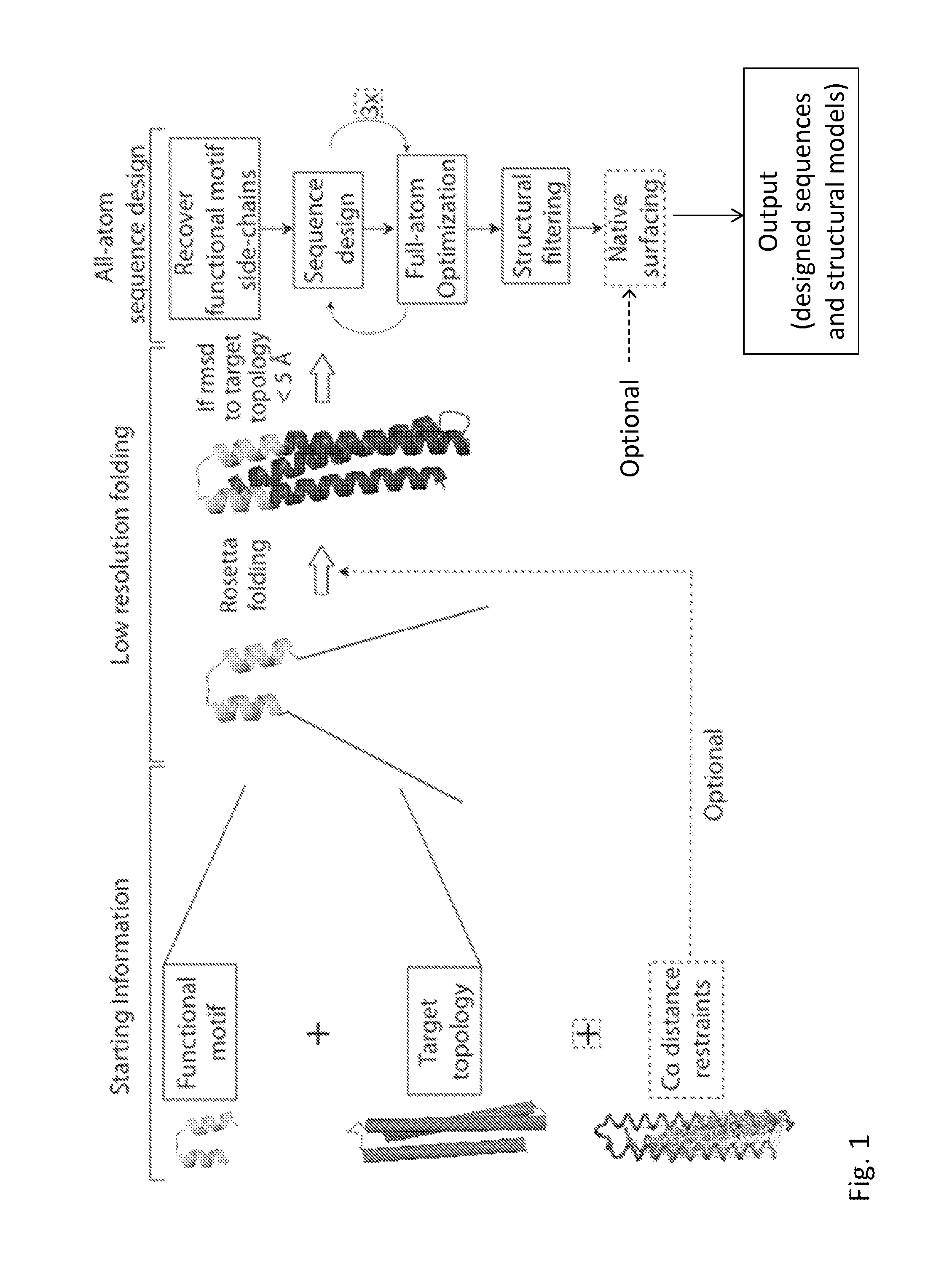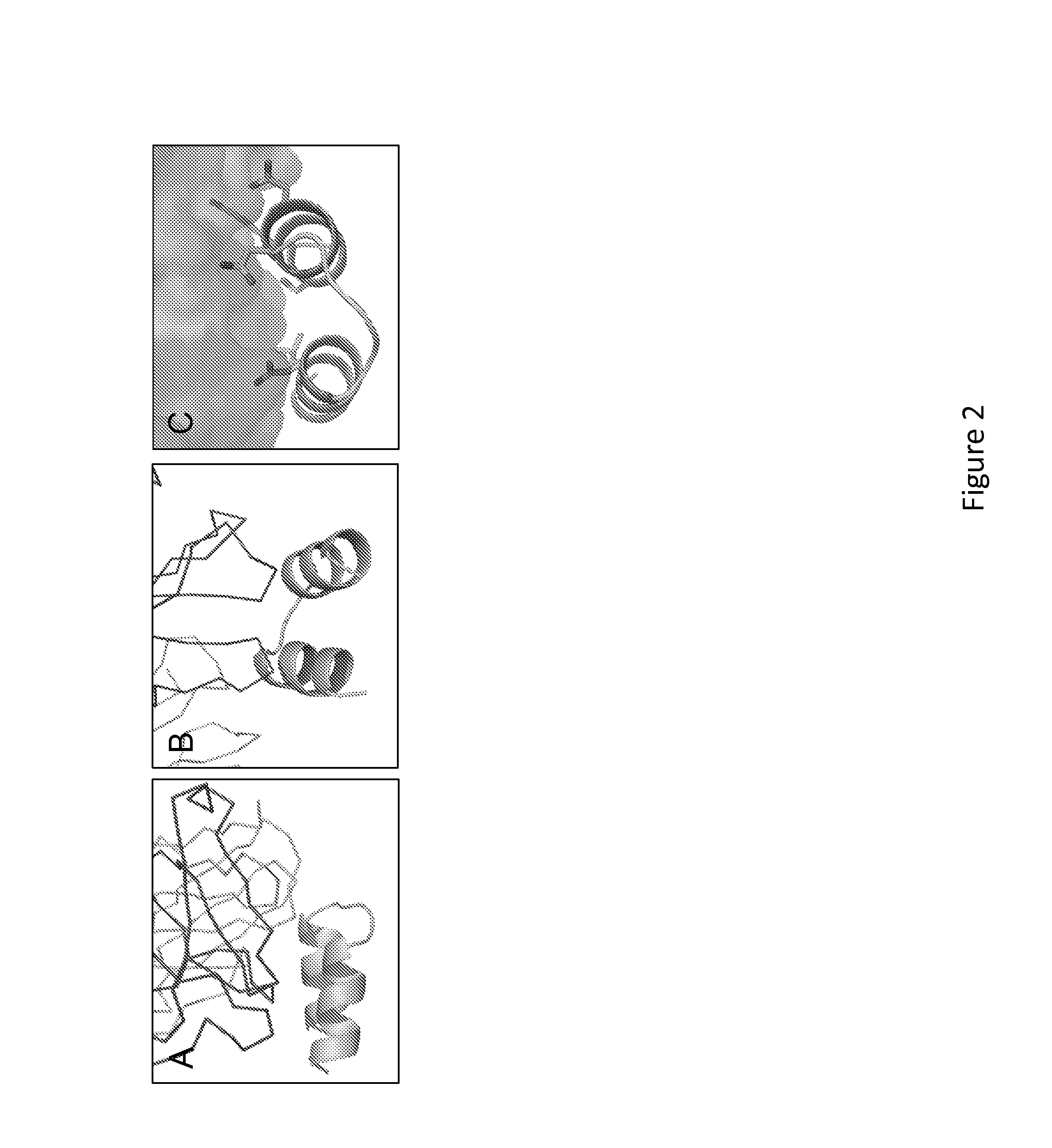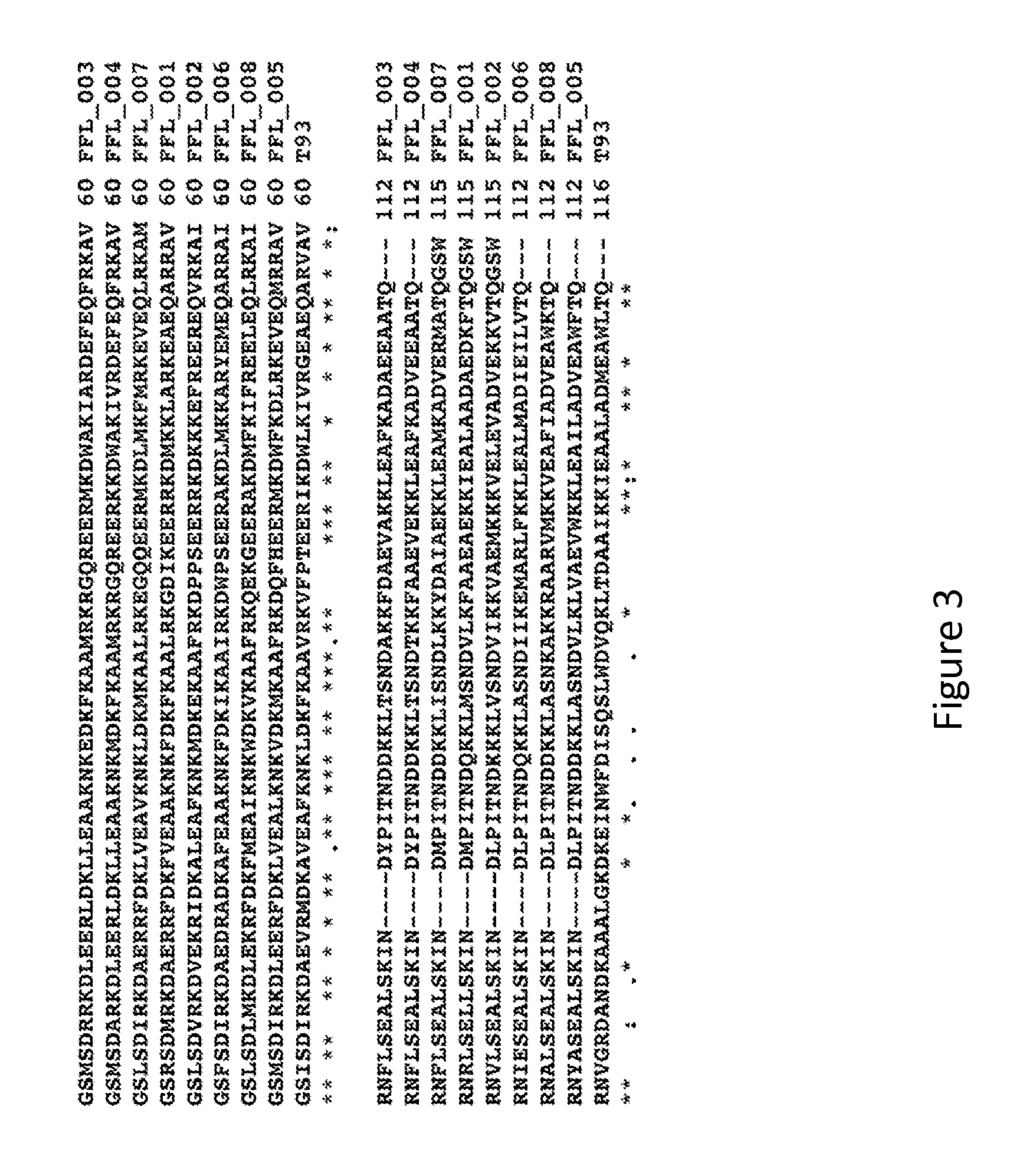Epitope-Scaffold Immunogens Against Respiratory Syncytial Virus (RSV)
a technology of epitopescaffold and respiratory syncytial virus, which is applied in the field of epitopescaffold immunogens against respiratory syncytial virus (rsv), can solve the problems that the treatment of pali is not economically or logistically feasible on a global scale, and achieve the effect of limiting the development of an rsv infection
- Summary
- Abstract
- Description
- Claims
- Application Information
AI Technical Summary
Benefits of technology
Problems solved by technology
Method used
Image
Examples
example 1
Results for Example 1
[0119]The structure of the RSV F site A peptide bound to Motavizumab was used as the target binding site for scaffolding. (FIG. 2) This peptide structure (chain P in PDBID: 3IXT) is a helix-turn-helix motif and that led us to choose a three-helix bundle as the target topology for these scaffolds. The structure of PDBID: 3LHP, chain S was selected as the particular three-helix bundle. Procedural details of the FFL designs are shown in Table 1. The different parameters and filtering criteria used on the FFL simulations are summarized. The manual intervention stage is also summarized relative to: number of core mutations performed, the initial Rosetta energy of the designs and the Rosetta energy after the mutations and the full-atom refinement step.
TABLE 1Manual InterventionComputationalFilteringRosettaAlgorithmEnergy +energyBSCompositeHelixRosetta(post-DesignSD (Å)adesignbFiltersBendcenergyMutationsrelax)dFFL_0011.5X✓X———FFL_0023.0✓✓X−28910−276FFL_0033.0✓✓X−2864−2...
example 2
[0126]FFL—001 scaffolds were conjugated to the surface of HepBcAg particles to improve immune responses to the epitope. The scaffolds were conjugated via hetero-bifunctional cross-linkers between an engineered cysteine in the scaffold at the opposite end from the epitope, and an engineered lysine on the tip of the major immunodominant region of HepBcAg. This oriented the scaffolds in such a way that the epitope was exposed at the radial exterior of the conjugated particle.
[0127]Particles from HBcAg residues 1-149, a construct that leads to higher expression in bacteria and a predominance of the larger T=4 particle with 240 HepBcAg monomers (Zlotnick et al., 1996; Wynne et al., 1999), were expressed in E. coli and purified via standard sucrose gradients. For chemical coupling of monomeric FFL immunogens, pure lysine-functionalized HBcAg(1-149) particles were expressed and purified using standard techniques, in which a lysine residue was engineered into the tip of the immunodominant s...
PUM
| Property | Measurement | Unit |
|---|---|---|
| molecular weight | aaaaa | aaaaa |
| dissociation constants | aaaaa | aaaaa |
| dissociation constants | aaaaa | aaaaa |
Abstract
Description
Claims
Application Information
 Login to View More
Login to View More - R&D
- Intellectual Property
- Life Sciences
- Materials
- Tech Scout
- Unparalleled Data Quality
- Higher Quality Content
- 60% Fewer Hallucinations
Browse by: Latest US Patents, China's latest patents, Technical Efficacy Thesaurus, Application Domain, Technology Topic, Popular Technical Reports.
© 2025 PatSnap. All rights reserved.Legal|Privacy policy|Modern Slavery Act Transparency Statement|Sitemap|About US| Contact US: help@patsnap.com



